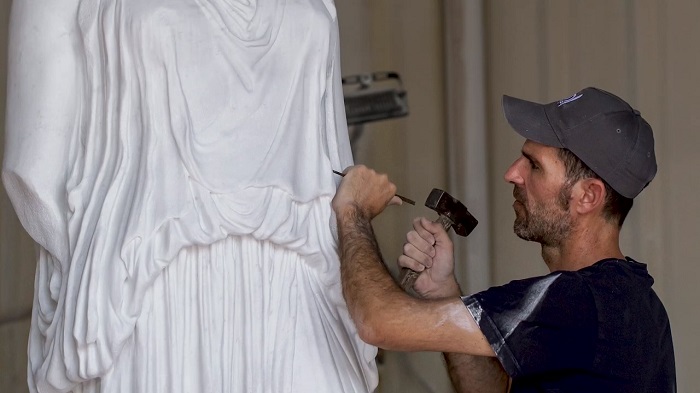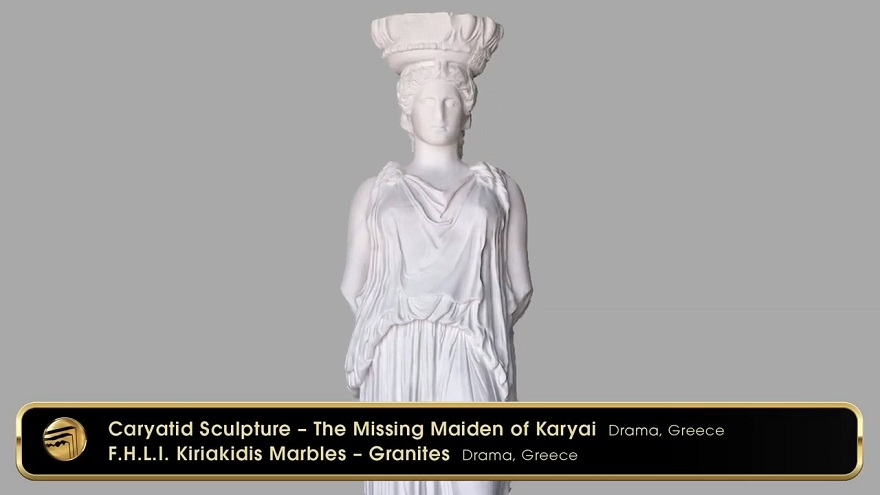The Pinnacle Award of Excellence was won by the replica of the ‘missing’ Caryatid in the category architectural/letter/sculpture carving. The work is called ‘CARYATID – the missing maiden of Karyai’ and was created by FHL Kyriakidis.
The company chose to create the statue on a single piece of marble, which made the process more difficult, as the marble used is rare and can only be found on the island of Thassos. To be completed, the project required a detailed 3D model of the original statue, created by robotic machines over more than 30 days. FHL Kyriakidis then commissioned their in-house sculptor to complete the project that took more than two months of careful hand-finishing.

The 2.31-metre-tall sculpture is a faithful replica of the original and bears all the original’s details, such as the folds of the hairstyle, the fluid veil and the tunic that complement the female figure.
The Caryatids are a perfect example of Greek sculpture and craftsmanship while demonstrating the eternal vitality of natural stone, especially marble.
 The Caryatids
The Caryatids
The original sculpture is one of a total of six Caryatids or ‘Maidens of Karyai’. The Caryatids, one of the most iconic sculptural complexes, are highly recognizable worldwide and are synonymous with ancient and modern Greece.
For over 2,300 years, the ‘Six Maidens of Karyai’ stood together in the southern gallery of Erechtheion in Acropolis. However, since 1801, the original ‘missing’ Caryatid has been on display at the British Museum in London after its abduction by Lord Elgin. The other five originals have been exhibited since 1979, united in their original formation, at the Acropolis Museum in Athens. The second spot on the left-hand side of the complex remains empty, symbolizing the Caryatids’ continuing demand that their ‘missing sister’ be returned to her rightful home.
Historical context
The six original Caryatids were carved between 421 and 415 BC from Pentelic marble, glued onto slabs of grey Eleusinian limestone. It is claimed that they were the visible part of the tomb of Cecropa, the mythical king of Athens. The Greek term ‘Karyatides’ literally means ‘Daughters of Karyes’, an ancient city of Peloponnese. In ancient Ionic architecture, slim statues of female figures often replaced the columns. The classic figure of a Caryatid is wearing flattering veils and tunics. She has a straight and slender torso and legs slightly forwarded either to the right or the left. The hands are at the side and down, while sometimes she holds a tribute in one hand. The folds in the clothes harmonize with the grooves of the columns following the curves of the body.










































